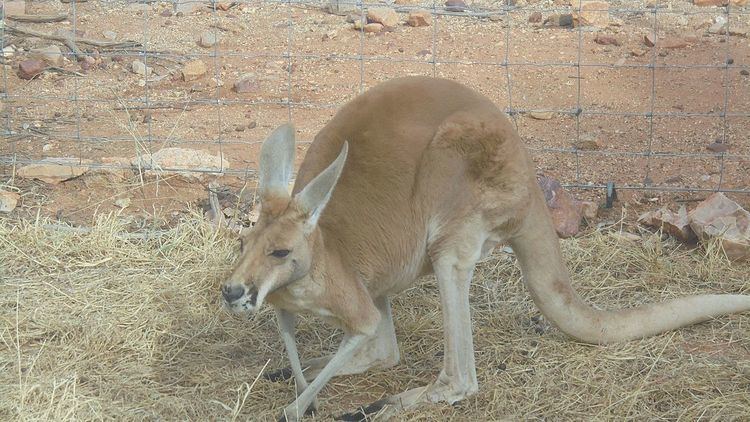Date opened March 1997 Memberships ZAA, BGCI Area 13 km² Number of species 120 | Annual visitors 100,000 Opened March 1997 Phone +61 8 8951 8788 | |
 | ||
Land area 1,300 hectares (3,212 acres) Major exhibits Desert Rivers, Sand Country, Nocturnal House, Woodland Address 871 Larapinta Dr, Alice Springs NT 0871, Australia Hours Closed now Saturday7:30AM–6PMSunday7:30AM–6PMMonday7:30AM–6PMTuesday7:30AM–6PMWednesday7:30AM–6PMThursday7:30AM–6PMFriday7:30AM–6PM Similar Olive Pink Botanic Garden, Alice Springs Telegrap, Anzac Hill, Royal Flying Doctor Se, Alice Springs Reptile C Profiles | ||
Joe goes to alice springs desert park
The Alice Springs Desert Park is an environmental education facility in Alice Springs in the Northern Territory of Australia.
Contents
It is sited on 1,300 hectares (3,212 acres), with a core area of 52 hectares (128 acres). It is an institutional member of the Zoo and Aquarium Association (ZAA) and Botanic Gardens Conservation International (BGCI).
The park contains native animals and plants representative of central Australian desert environments, and contributes to their conservation through research programs as well as through public education. It offers people the opportunity to experience the variety of the deserts of central Australia, exploring the inter-relationships between the plants, animals and people.
The area is culturally important to the local Arrernte people. Much of the work of the park is under the auspices of their apmereke-artweye (decision-makers) and kwertengerle (caretakers) - people once known as the park's traditional owners.
Exhibits and facilities
The park contains three separate walk-through desert habitat areas accessed through a 1.6-kilometre (1 mi) trail: Desert Rivers, Sand Country, and Woodland. In addition, it has a Nocturnal House and a Nature theatre. The entrance area includes an exhibition center, rest rooms, and cafe.
In this habitat, visitors walk through dry river beds,and areas that have been flooded, and past swamps and water holes. The plants here include river red gums, coolibah trees, aquatic plants, and reeds. Animals in this habitat include finches, cockatoos, water birds, frogs, and fish. Demonstrations here show how the aboriginal people use this habitat to harvest food and medicine.
This exhibit is a re-creation of the sandy desert including clay, gypsum, and salt pans.
The Nocturnal House is located between the Sand Country and Woodland habitats, and is home to many Central Australian reptiles, invertebrates, birds, and mammals that are active during the night. The collection includes some reptiles that may be active during the day but difficult to find in the desert.
The Woodland habitat includes enclosures for kangaroos and emus. Visitors can walk among the kangaroos in their exhibit area.
Presentations at the Nature Theatre show visitors some of the animals that might be seen while walking through the park, including demonstrations with free-flying birds of prey.
Presentations at the park, include information on Aboriginal Survival one focusing on water gathering and another on food gathering. The food gathering presentation is particularly focused on the Arrernte People and includes information on sex roles, with the distinct jobs of men and women. Information on kinship focuses on Arrernte Skin names and the rules for relations ships built around the skin name groupings.
